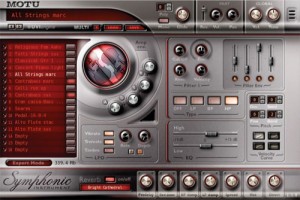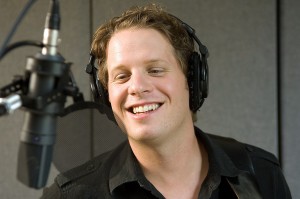 As many of you have been aware, I’m a musician. I started playing piano at seven years old and moved over to guitar at 15 and have played in addition trumpet, flute [which taught me how to fight], harpsichord, organ [no jokes!], clarinet and cello and got into symphonic music so I moved on to synthesizers. In the beginning synthesizers sort of imitated the instruments they were supposed to sound like, but never quite did a perfect job. There were a few people like Isao Tomita and Wendy Carlos who could do classical music that was passable. It even got them quite a bit of fame. Tomita was my inspiration behind my version of Mars, Bringer of War by Gustav Holst.
As many of you have been aware, I’m a musician. I started playing piano at seven years old and moved over to guitar at 15 and have played in addition trumpet, flute [which taught me how to fight], harpsichord, organ [no jokes!], clarinet and cello and got into symphonic music so I moved on to synthesizers. In the beginning synthesizers sort of imitated the instruments they were supposed to sound like, but never quite did a perfect job. There were a few people like Isao Tomita and Wendy Carlos who could do classical music that was passable. It even got them quite a bit of fame. Tomita was my inspiration behind my version of Mars, Bringer of War by Gustav Holst.
Inspirational people like this led me to study music composition in college. I ran the electronic music studio as San Francisco State for a couple of years that led to me creating a piece called Armageddon that was featured at a World Electronic Music Convention in Italy in the early 80’s.
That still wasn’t enough. That was electronic and experimental not orchestral. He’ll, I didn’t want to be the orchestra leader, but the entire orchestra myself. So I decided to start out easy in the SFSU Electronic Music Studio by recomposing the Brandenburg Concerto by Bach. I wasn’t really playing anything because back then I didn’t know enough about being an orchestra to play parts of a larger piece that weren’t the melody. So I actually typed in the entire piece on a musical keyboard. Instrument, by instrument. It took me a couple of months and when I was finished I played it and realized, I had lots of typos that while you can excuse them a bit in writing, in music it becomes painful to the ears. So I went back and checked my musical typing into the sequencer, found the mistakes and corrected them. Then I carefully chose the sounds to use to for the strings, flutes, clarinets, trumpets and all the other instruments. Sometimes I had to tweak the patches to make them sound better. In the end, it sounded electronic, but much better that what I had heard before. I felt like I was now in the same category of Tomita and Carlos. Then the day came that I presented it to the class.
The teacher scowled at me, THAT’S NOT ELECTRONIC MUSIC! THAT’S JUST REPURPOSED CLASSICAL! He and everyone else in the class thought it was very good though. He did have a point. Most of the other electronic music was atonal, arhythmic and sort of sounded like banshees and noise on a bad day. But what could I say, I was a pop star of a weird music genre.
OK, I didn’t write it, I didn’t even play it, but it was a start. When I finally got my first pair of real synthesizers and now had an understanding of how to create the sounds I started tinkering with them. It was late one night on a weekend and I had a few shots of scotch in me at the time and a melody came into my head. It had me at first thinking of a battle scene in a movie starting out slowly like when you hear the sound of horses running off in the distance and then they get louder as they get closer and closer and the music get’s louder until you see a large group of warriors on horses coming over the hill screaming and entering battle. All the other parts just fell into place and I think the entire piece was finished in an hour. I called it Victory. It had a feeling of some of the impressionist composers that caused riots when their music was first played along with a nod to Danny Elfman’s orchestral work. It was only about four minutes long. Not exactly enough to be released as a single, so I thought up an idea of turning it into a nine part symphony even though most symphonies had four parts and sometimes three. In the end it was called Symphony of the Nine Angles and I ended up using inspiration from H.P. Lovecraft and the derivative writings of Dr. Michael Aquino and Don Webb. It’s a pretty dark sounding piece of music, but since I was into the darker shades of hard rock and metal it sort of fit.
Next came my CD the Vampyric Suite which was four pieces expressing different aspects of vampires [Anne Rice and all her spin off fanatics were popular at the time] plus Munsalvache [a torrential sounding solo organ piece] and my versions of Night on Bald Mountain and Mars, Bringer of War. So there I was surrounding myself with darkness once again. After that I sort of hung up my classical composing for a long time focusing on getting my hard rock album out. Now that I have a daughter she likes to play on my keyboards and make her own music that I have to say at four years old sounds a whole lot better than some of the stuff that was coming out of the SFSU studio in the 80’s.
This got be back to playing with the synths again and there’s always been one piece that I’ve always loved as a child that I’ve tried in the past, but never been able to do well — The Sorceror’s Apprentice by Georg Dukas. I present that to you now. It will need to be reworked though because unfortunately my synths are at least 15 years old some even older. So the sounds, while good aren’t that good. Hell, you don’t even need synths now, just a keyboard to trigger the sounds on a software synth or sampler that’s running on your computer. So I’m saving up my money to get a copy of MOTU’s Symphonic Instrument. These sound great and they will do this piece justice so that I won’t have to deal with the woodwinds sounding like an accordion. I’ve always been a big fan of MOTU’s products and have used them since the beginning. I run Digital Performer and use their MOTU 828 interface to my computer and the sound is excellent. I’m not going to ask you for donations to get it. I’ll find a way to do it. Hopefully this will inspire me to produce another orchestral album in the near future. While retro music is great for some people, I really need to get my sounds into the 21st century. Give a listen to my version of the Sorceror’s Apprentice and tell me what you think. It’ll get better with the new sounds.
 Well I finally finished everything up and I’m hoping by Monday that my new album will be available in iTunes. In the mean time you can listen to the album down below. There should be actual CD’s available within a month. If you like Joe Satriani and Yngwie Malmsteen you’ll probably like this album. If you don’t, well you may not, but that doesn’t matter to me.
Well I finally finished everything up and I’m hoping by Monday that my new album will be available in iTunes. In the mean time you can listen to the album down below. There should be actual CD’s available within a month. If you like Joe Satriani and Yngwie Malmsteen you’ll probably like this album. If you don’t, well you may not, but that doesn’t matter to me.


